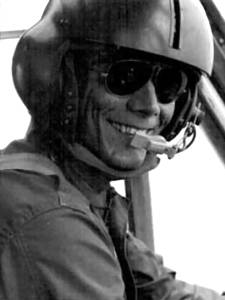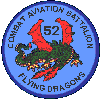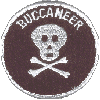|
Michael Davis O'Donnell
Major
170TH AHC, 52ND AVN BN, 17TH AVN GROUP, 1ST AVIATION BDE, USARV Army of the United States Springfield, Illinois August 13, 1945 to February 07, 1978 (Incident Date March 24, 1970) MICHAEL D O'DONNELL is on the Wall at Panel W12, Line 40 |
  |

|



| |
|
Michael O'Donnell wrote the following poem:
Placed by one who remembers, |
|
I would like to return Major O'Donnell's bracelet to his family.
CMSgt Craig B. Bergman |
|
I purchased a lithographed copy of "Remembrance" for a friend who spent 14 years as a Ranger before joining the Secret Service. On the back is a copy of Major O'Donell's poem. What the Major demonstrated was the wisdom of an unnamed philosopher who said:
O'Donnell was a great scholar and a brave warrior. I pray to God that there will come a day when the spirits of such magnificent men and their fellow soldairs will no longer be taken from us in battle.
From a grateful American who hates war but who loves the American warrior, |
|
MDO 4 Dec 69 I'd like to talk to the O'Donnell family because Mike was my friend and his loss still pains me.
From a good friend of Michael Davis O'Donnell, |
|
I memorized that poem after belonging to the unit that took Hamburger Hill. It has remained with me through all of my endeavors. Only just now have I found the selfless man who wrote it. I am in awe. Ne Desit Virtus.
Sgt Brendon Barnes, Infantry |
Notes from The Virtual WallOn March 24, 1970, helicopters from the 170th were sent to extract a Special Forces long-range reconnaissance patrol (LRRP) team which was in contact with the enemy about fourteen miles inside Cambodia in Ratanokiri Province. RED LEAD, one of two extraction helicopters, was commanded by James E. Lake. Captain Michael D. O'Donnell was the aircraft commander of one of the two cover aircraft (serial #68-15262, RED THREE). His crew consisted of WO John C. Hosken, copilot; SP4 Rudy M. Beccera, crew chief; and SP4 Berman Ganoe, gunner.The MACV-SOG team included 1LT Jerry L. Pool, team leader and team members SSGT John A. Boronsky and SGT Gary A. Harned as well as five indigenous team members. The team had been in contact with the enemy all night and had been running and ambushing, but the hunter team pursuing them was relentless and they were exhausted and couldn't continue to run much longer. When Lake and O'Donnell arrived at the team's location, there was no landing zone (LZ) nearby and they were unable to extract them immediately. The helicopters waited in a high orbit over the area until the team could move to a more suitable extraction point. While the helicopters were waiting, they were in radio contact with the team. After about 45 minutes in orbit, Lake received word from LT Pool that the NVA hunter team was right behind them. RED LEAD made a quick trip to Dak To for refueling. RED THREE was left on station in case of an emergency. As Lake was returning to the site, Pool advised if the team wasn't extracted at once it would be too late. Capt. O'Donnell evaluated the situation and decided to pick them up. He landed on the LZ and was on the ground for about 4 minutes, and then transmitted that he had the entire team of eight on board. The aircraft was beginning its ascent when it was hit by enemy fire, and an explosion in the aircraft was seen. The helicopter continued in flight for about 300 meters, then another explosion occurred causing the aircraft to crash in the jungle. The second explosion was followed by a yellow flash and a cloud of black smoke billowing from the jungle. A wingman made a high-speed pass over the site and came under fire, but made it away unscathed. Lake decided to go down and see if there was a way to get to the crash site. As he neared the ground, he was met with intense ground fire from the entire area. He could not see the crash site since it was under heavy tree cover. There was no place to land and the ground fire was withering. He elected to return the extract team to Dak To before more aircraft were lost. The Army account concludes stating that O'Donnell's aircraft began to burn immediately upon impact. Aerial search and rescue efforts began immediately; however, no signs of life could be seen around the crash site. Because of the enemy situation, attempts to insert search teams into the area were futile. SAR efforts were discontinued on April 18. Search and rescue teams who surveyed the site reported that they did not hold much hope for survival for the men aboard, but lacked proof that they were dead. The Army declared all 7 Americans missing in action.
From the Twelve men were aboard UH-1H 68-15262 when it went down:
The remains of the men lost in this crash were repatriated on 12 Apr 1995. DNA tests confirmed individual identification for four Americans - MAJ Michael O'Donnell, CWO John Hosken, SSGT Rudy Becerra, and SSGT Berman Ganoe, Jr. The three other Americans - CPT Jerry Poole, SFC John Boronski, and SFC Gary Harned - could not be individually identified; their presence aboard the helicopter and among the unidentifiable remains was based on circumstantial evidence. The recovery and identification of the remains was made public on 20 June 2001. |
| Contact Us | © Copyright 1997-2019 www.VirtualWall.org, Ltd ®(TM) | Last update 08/15/2019. |